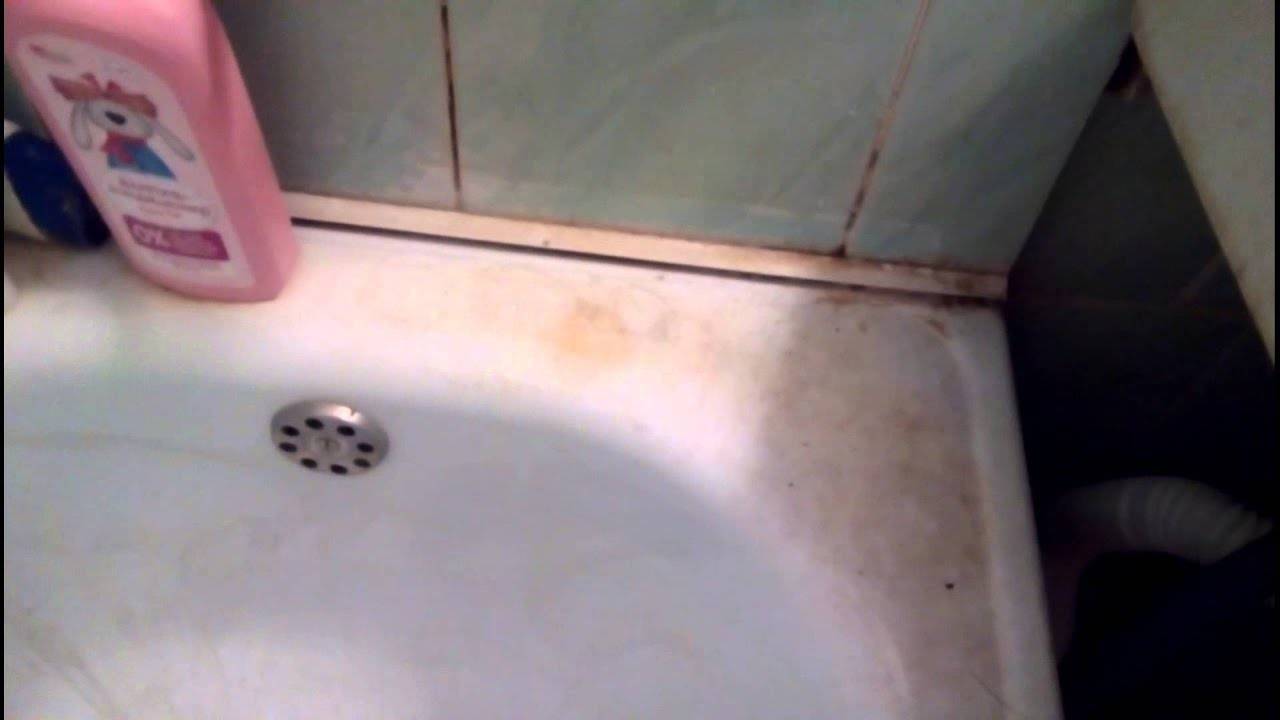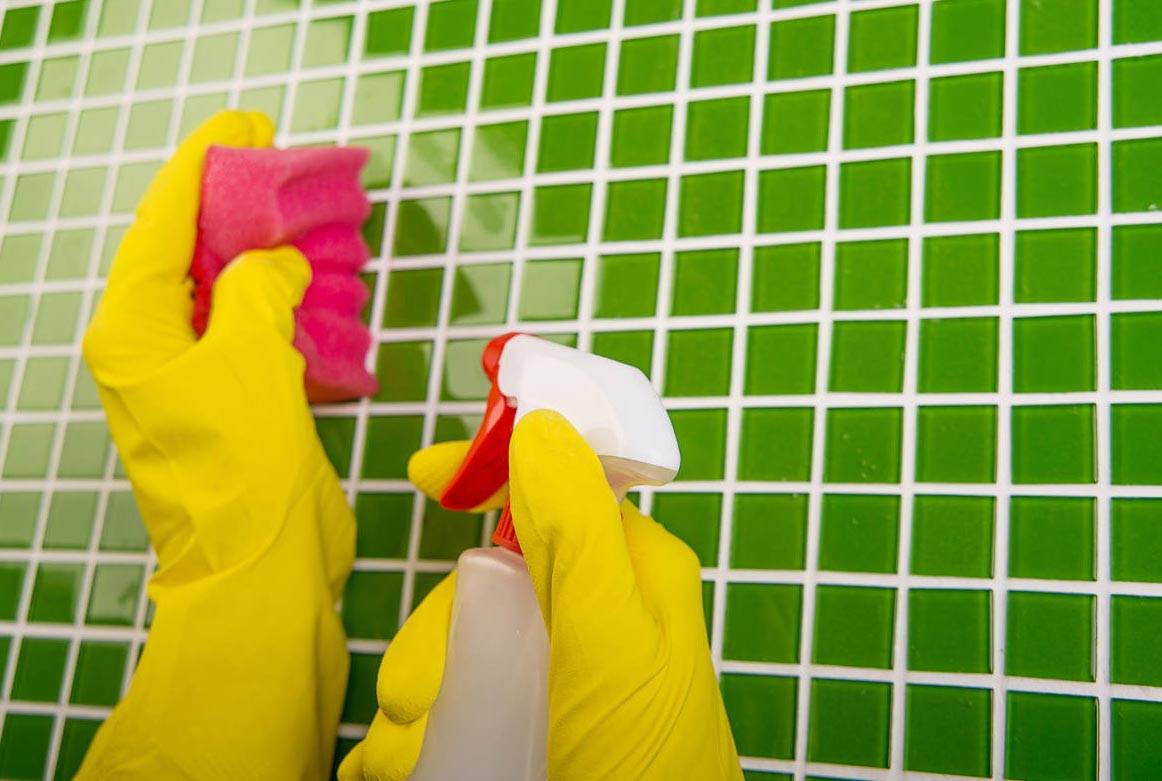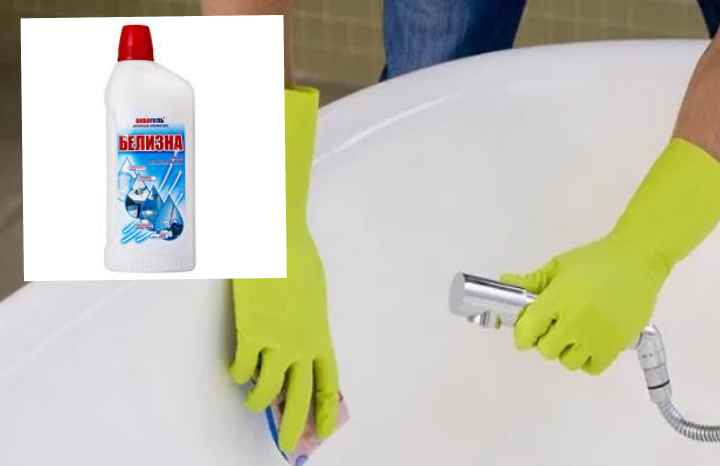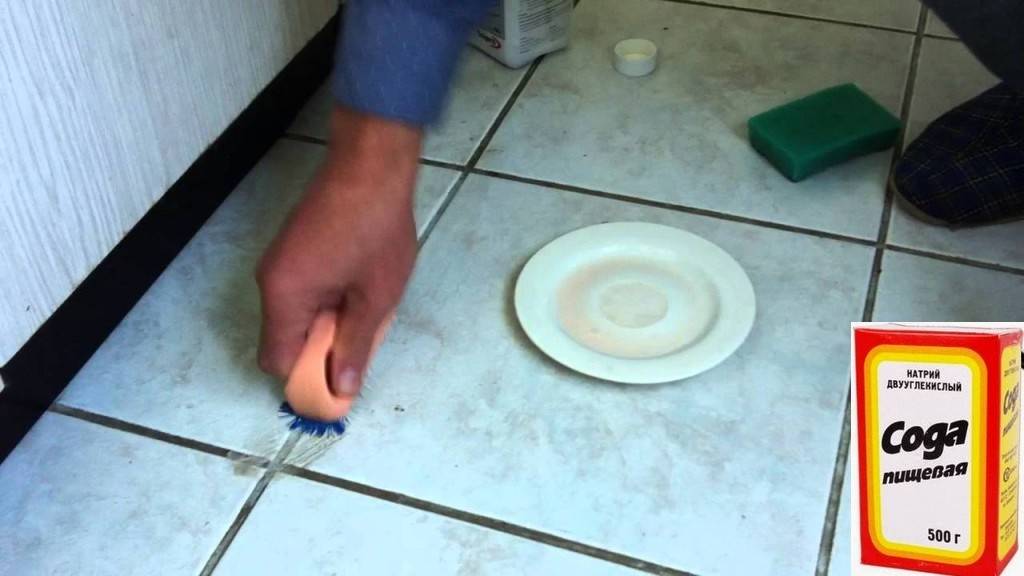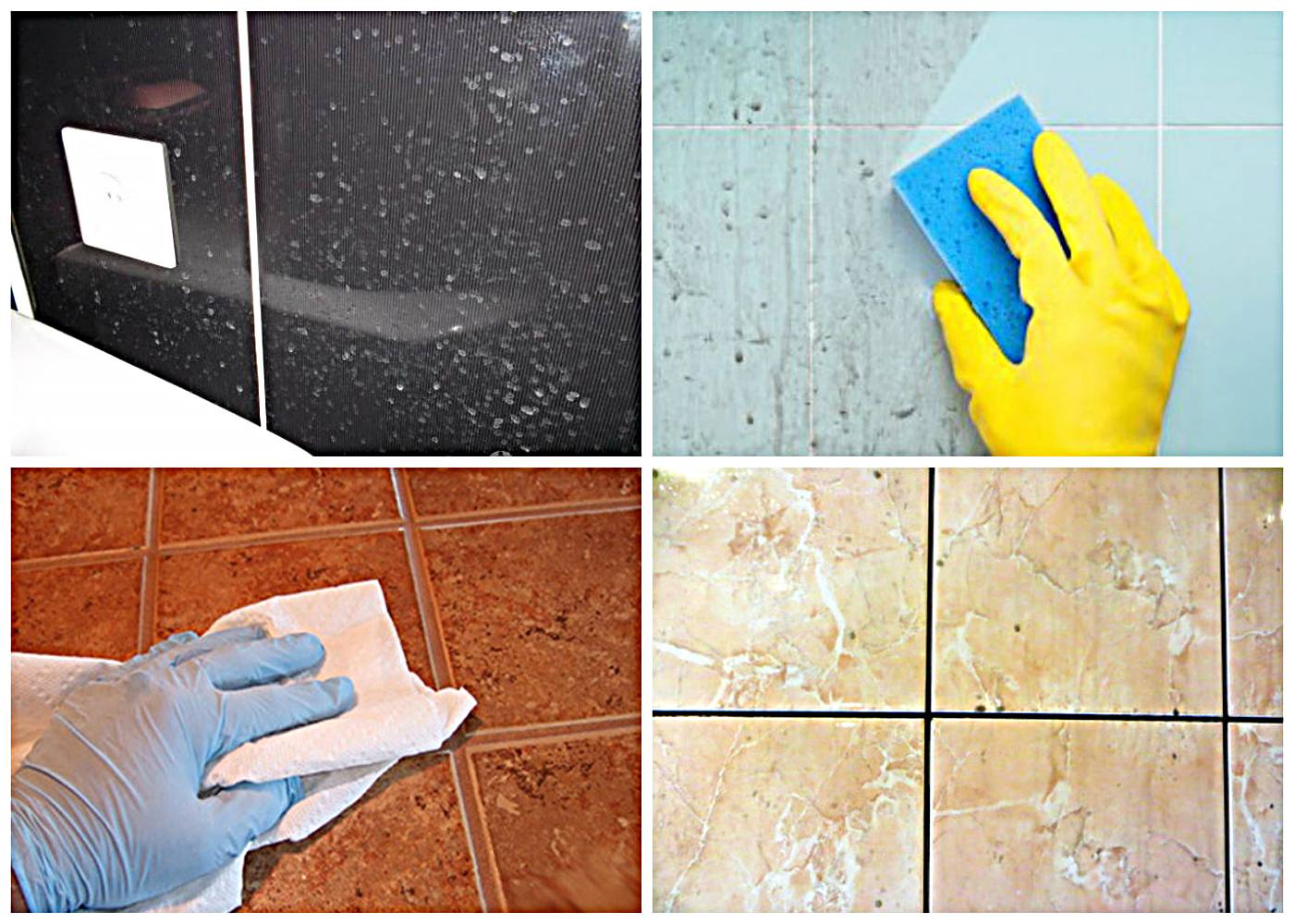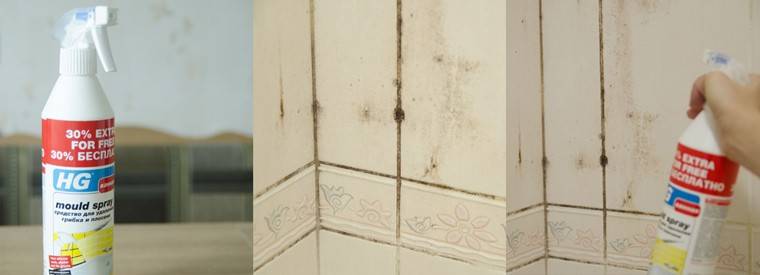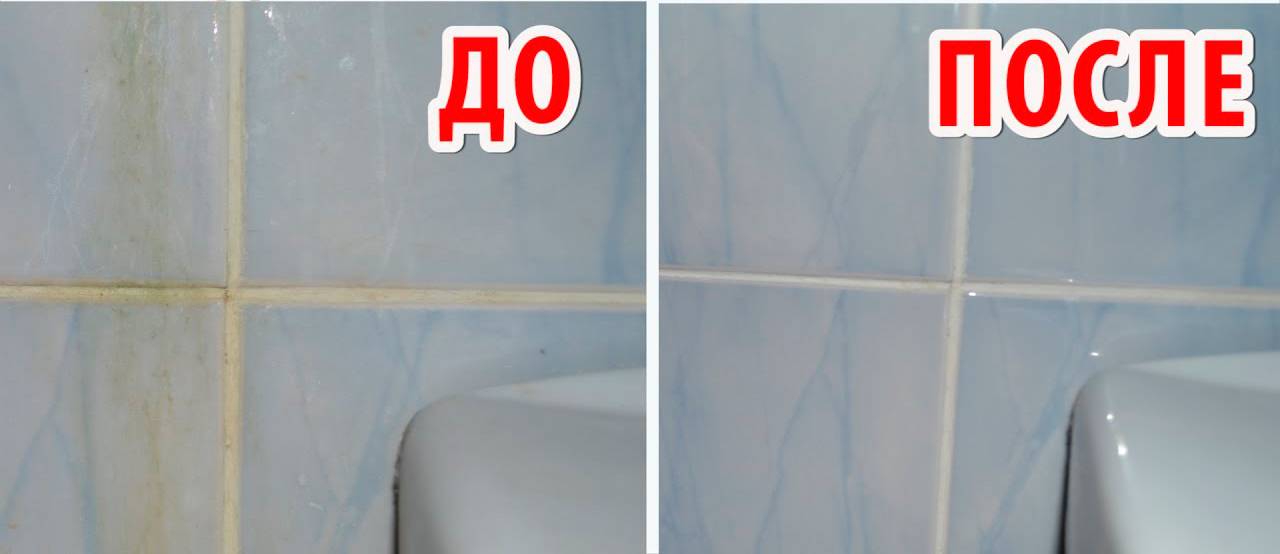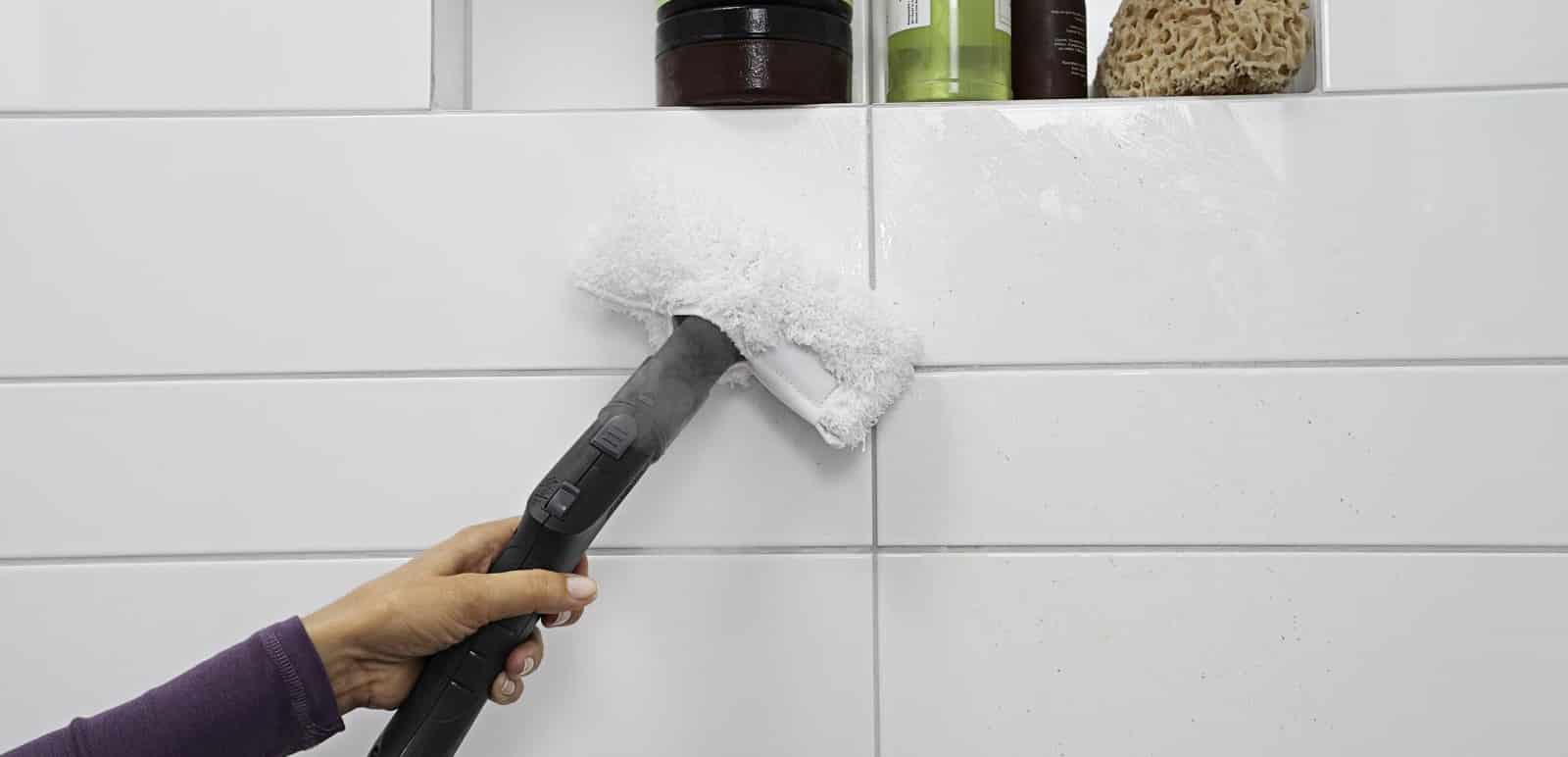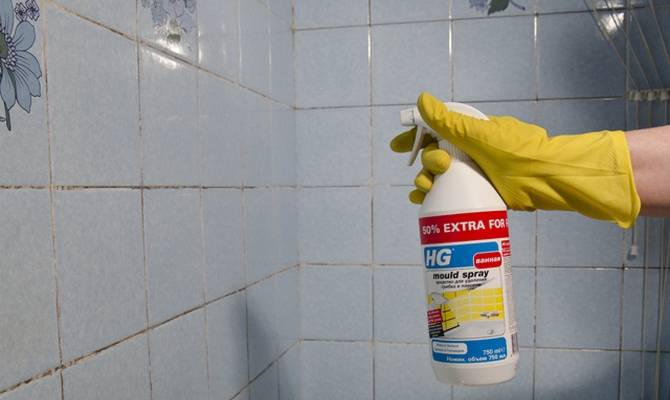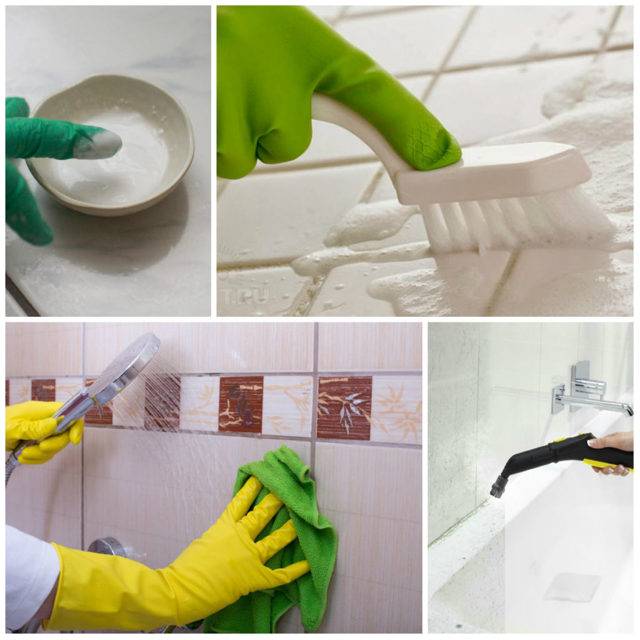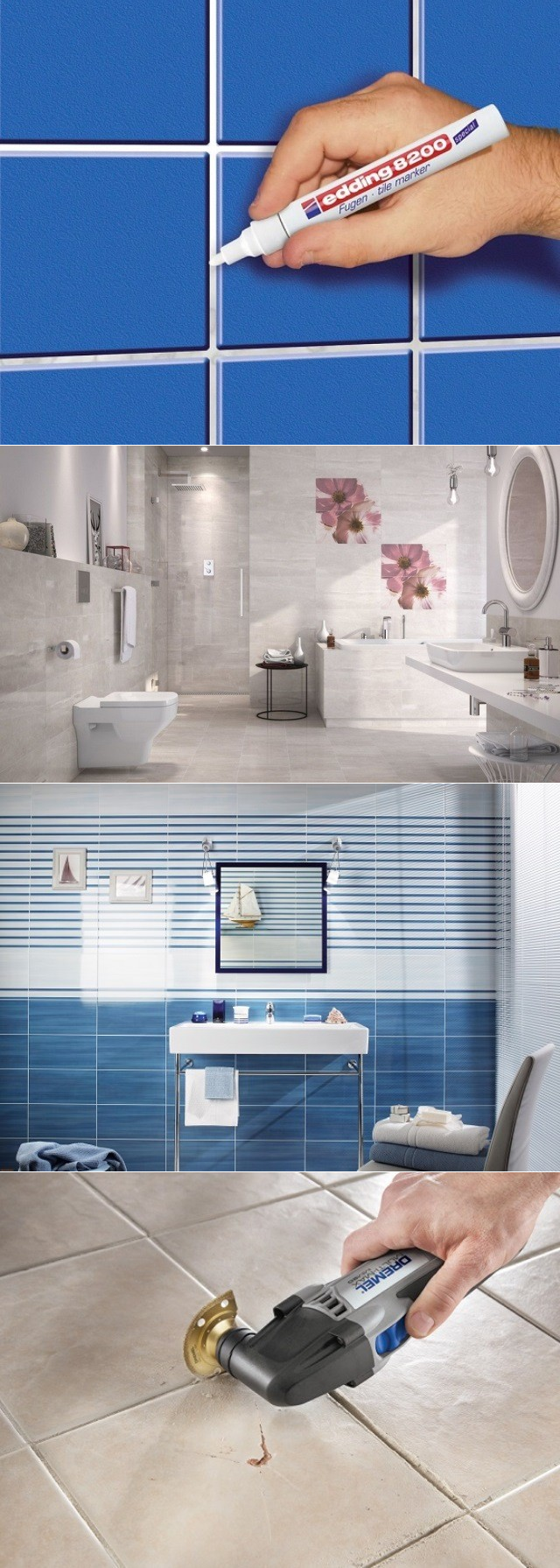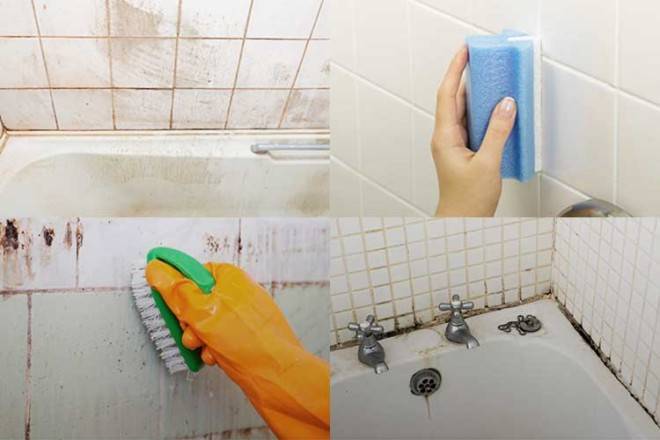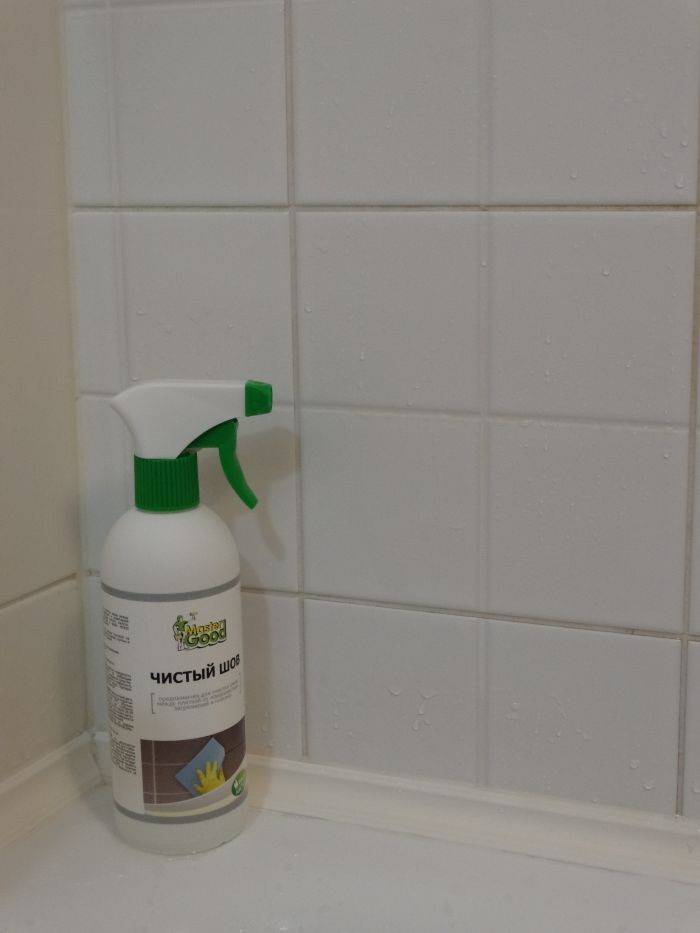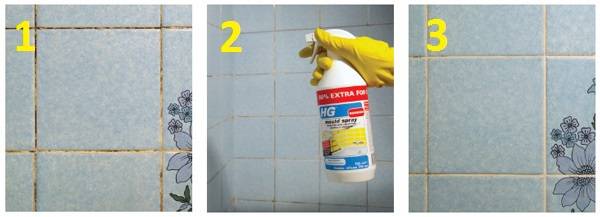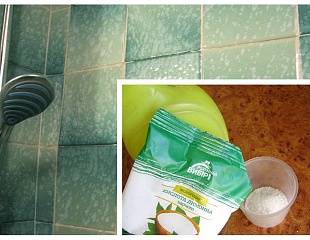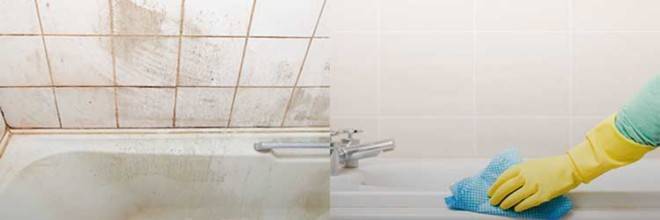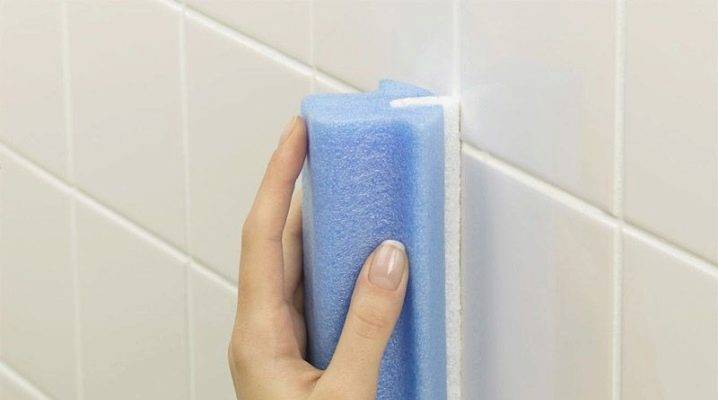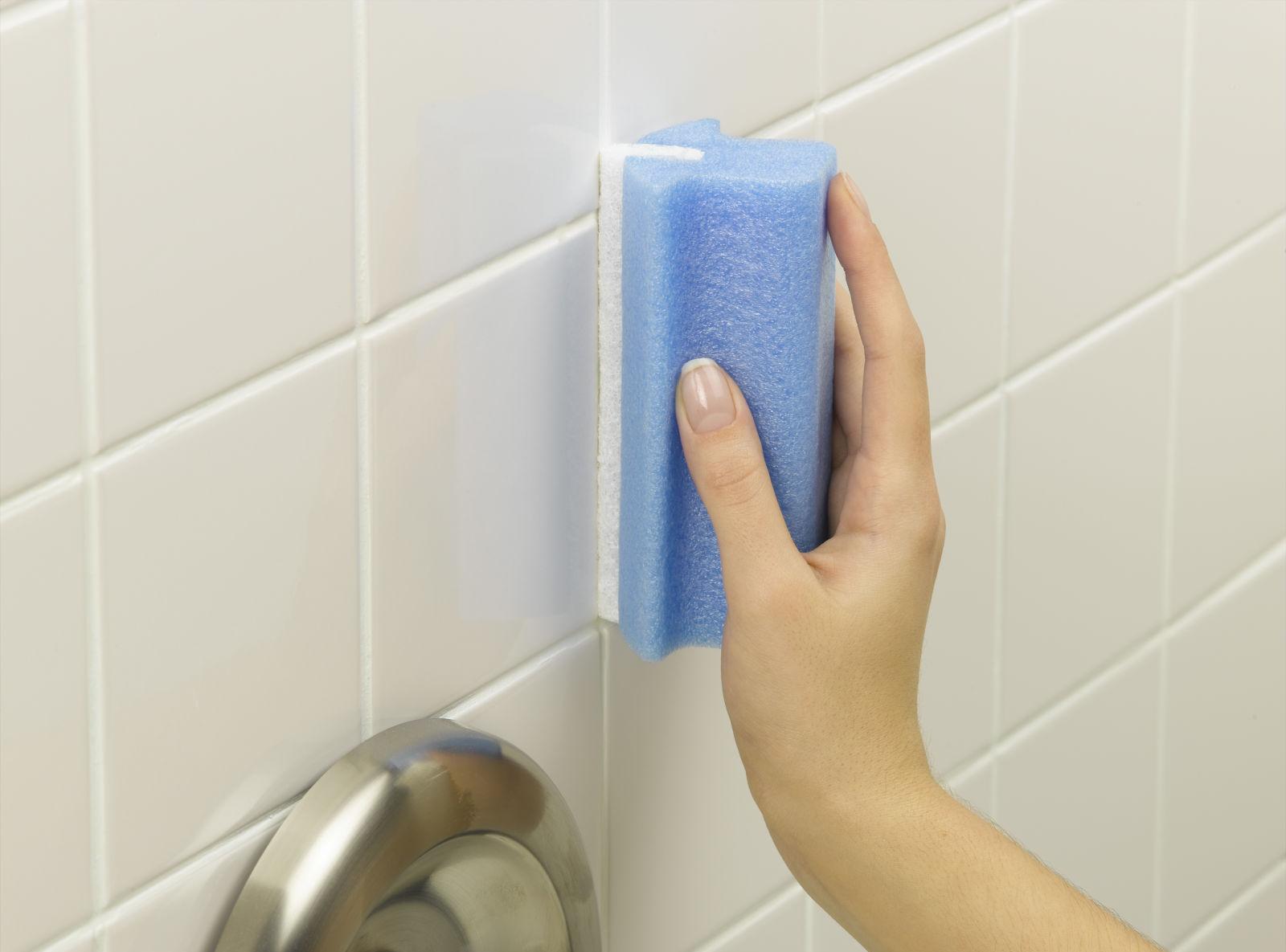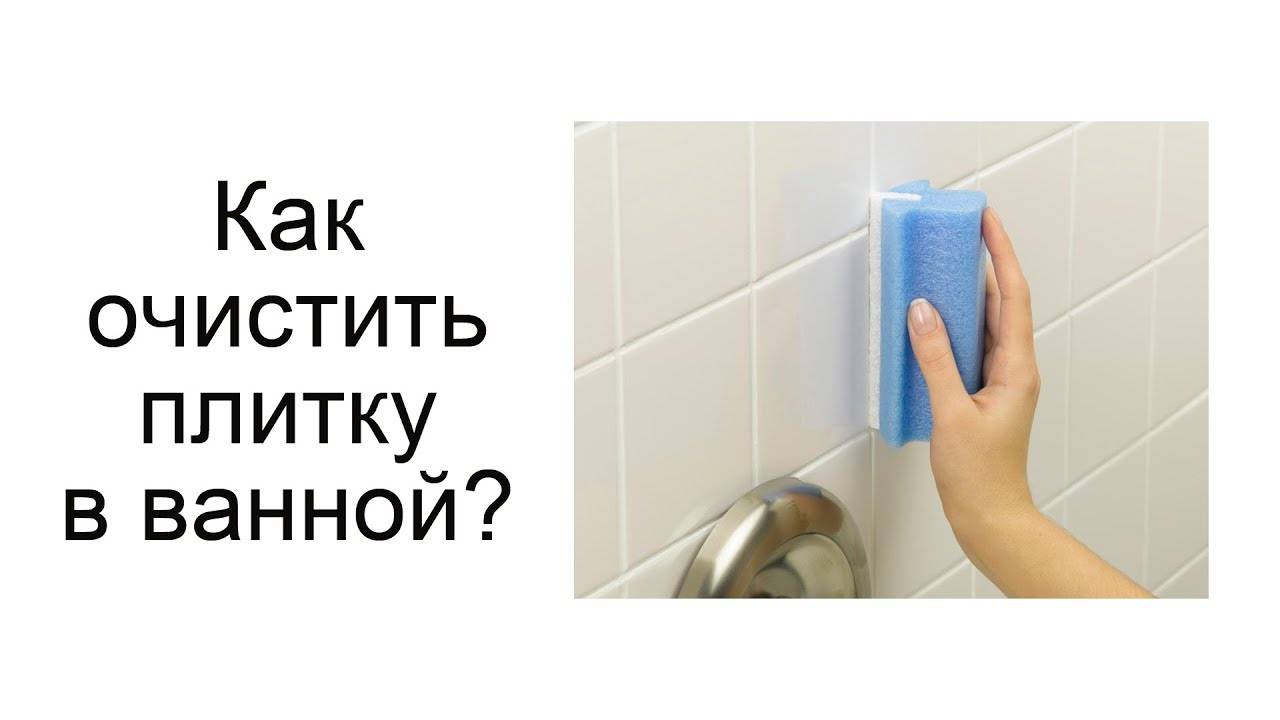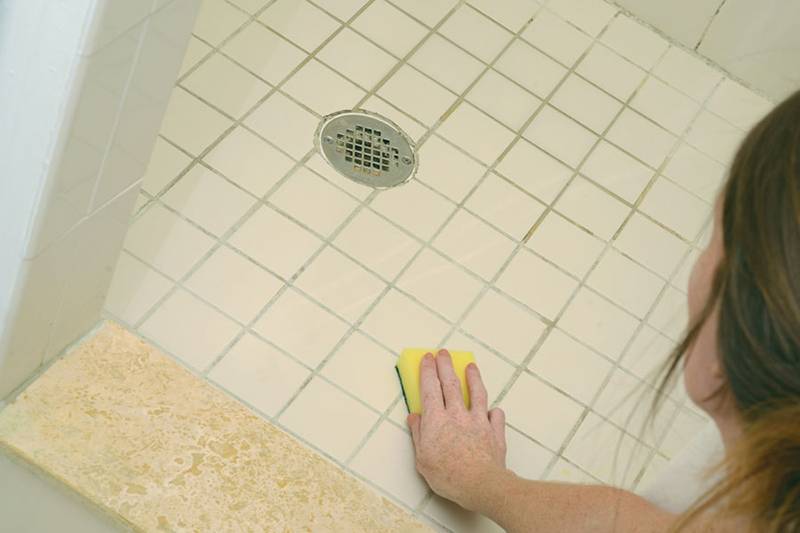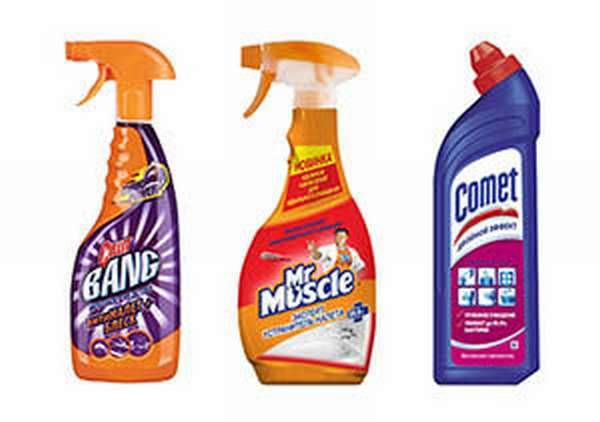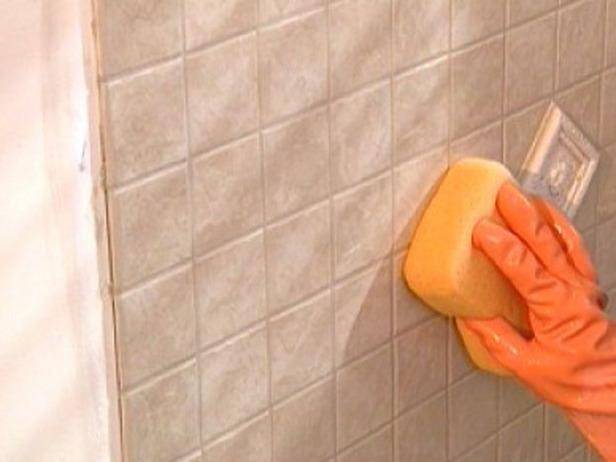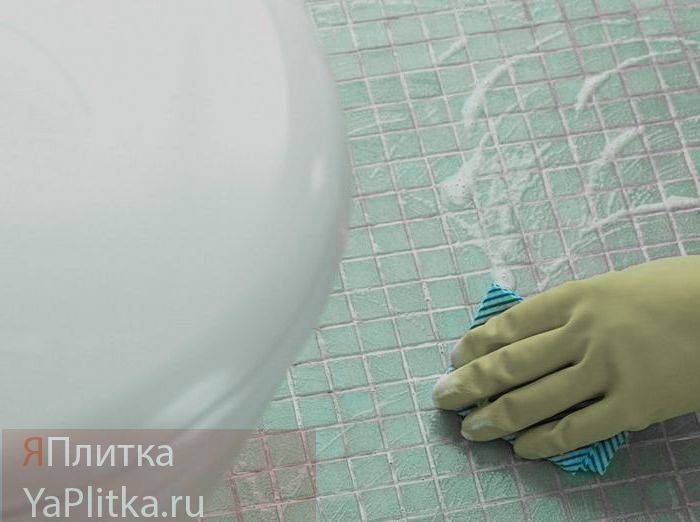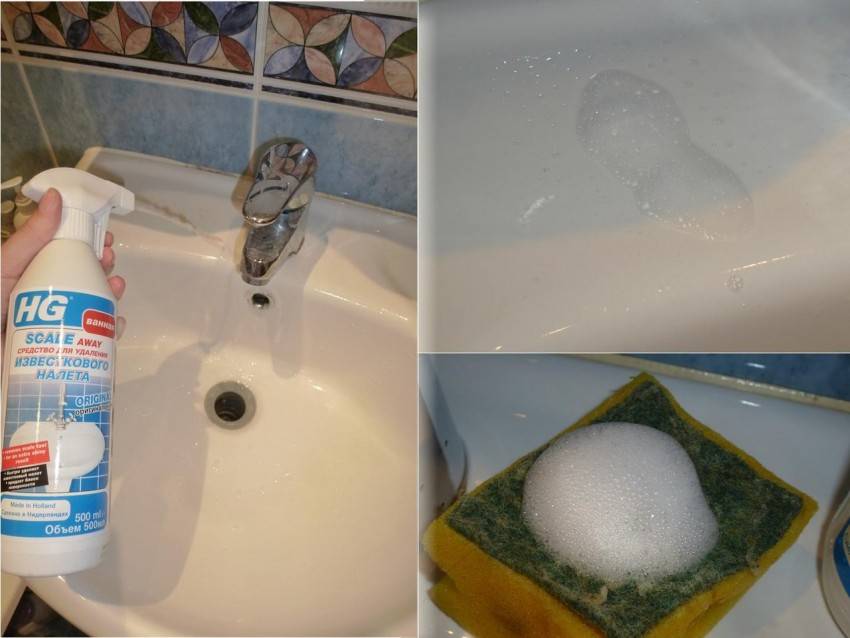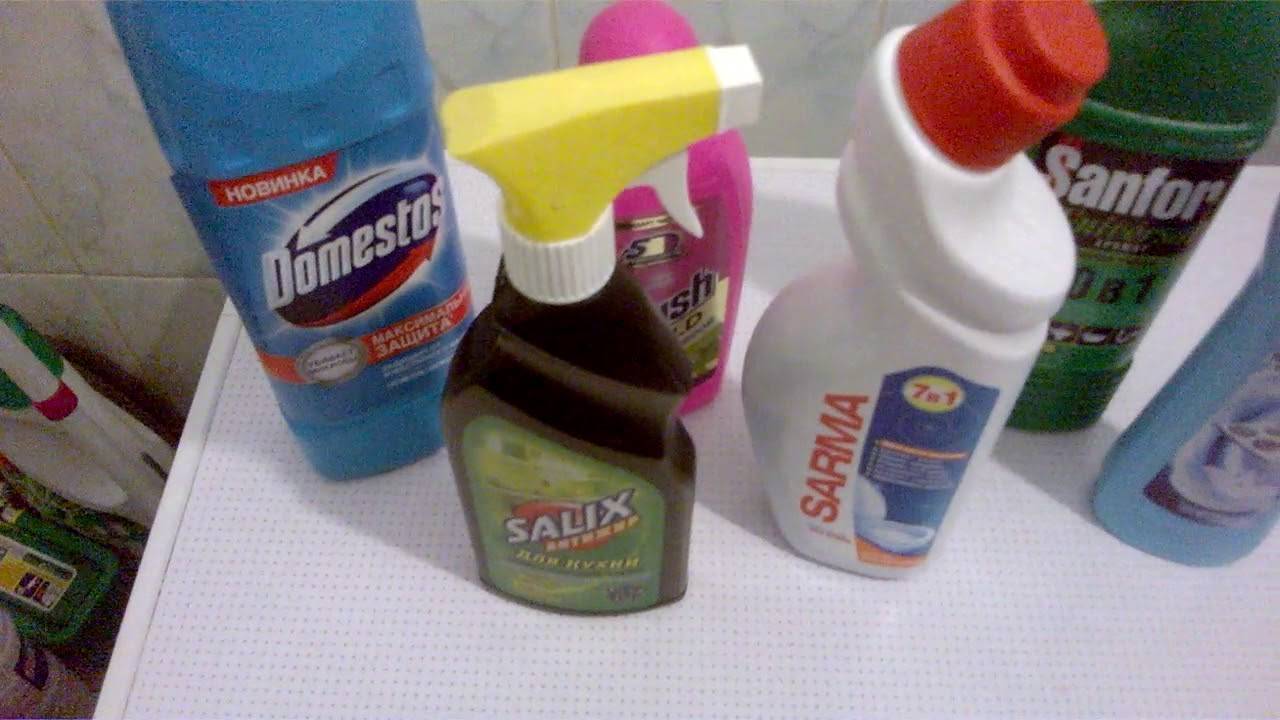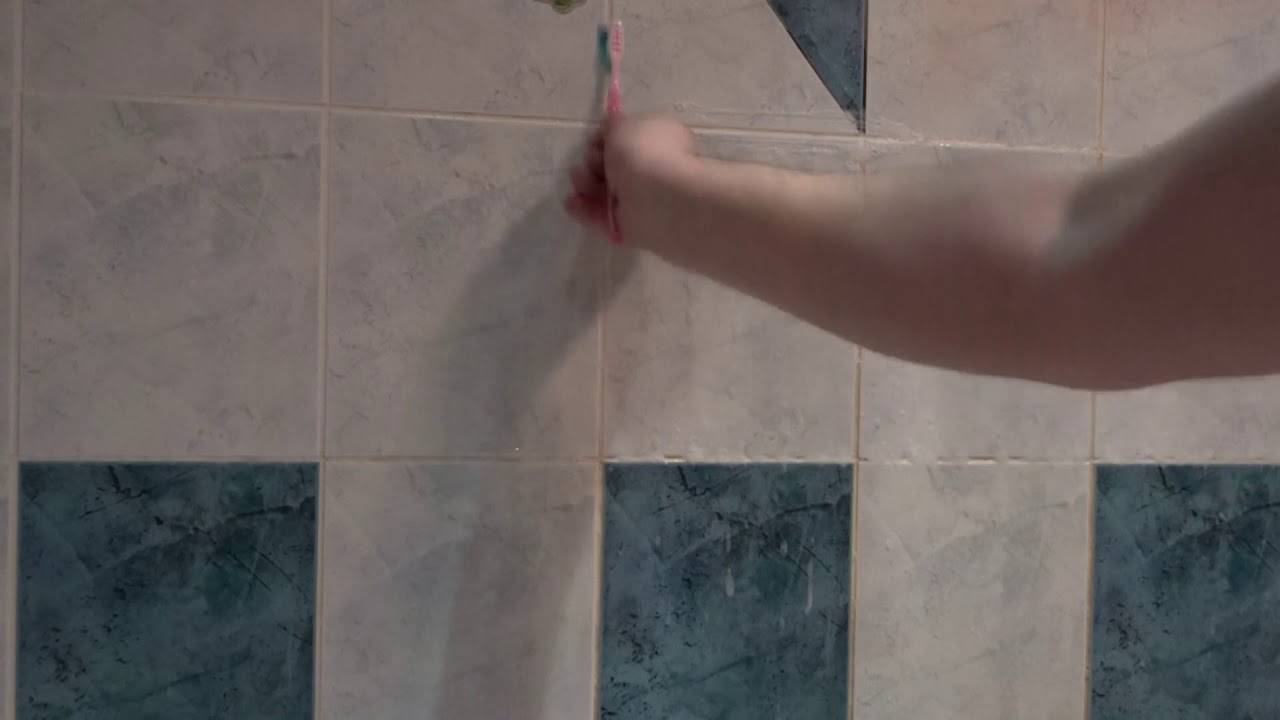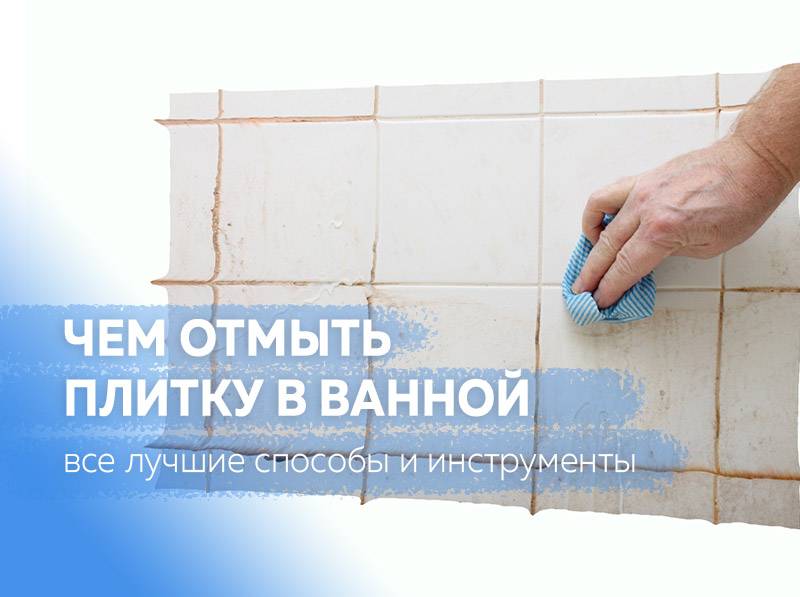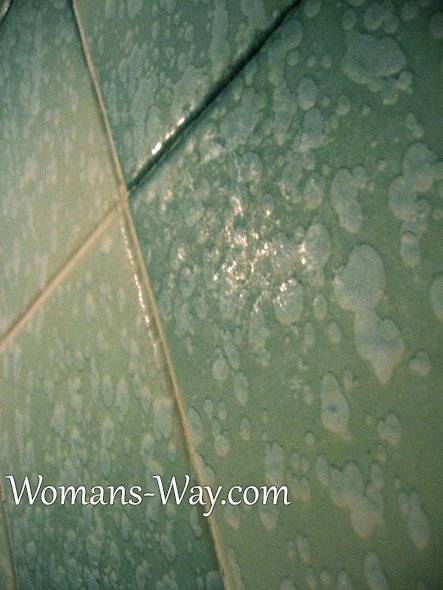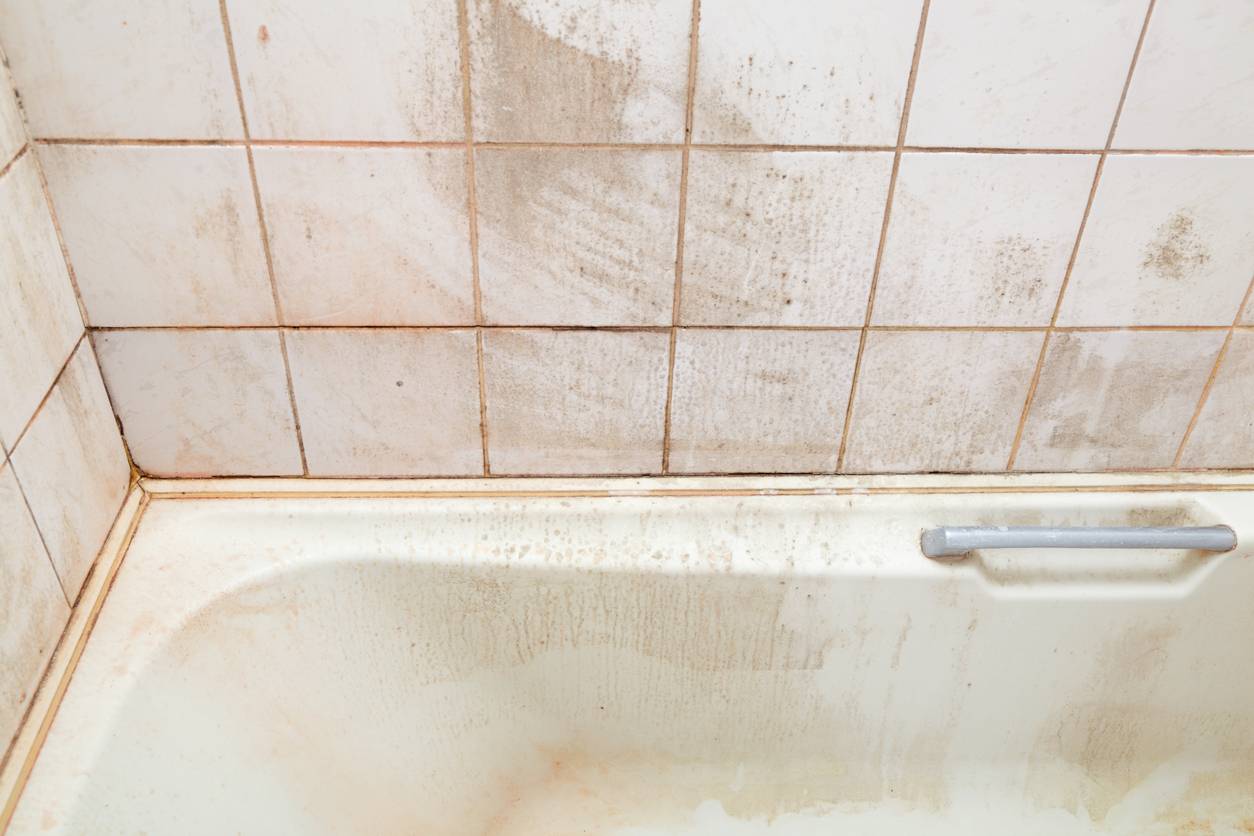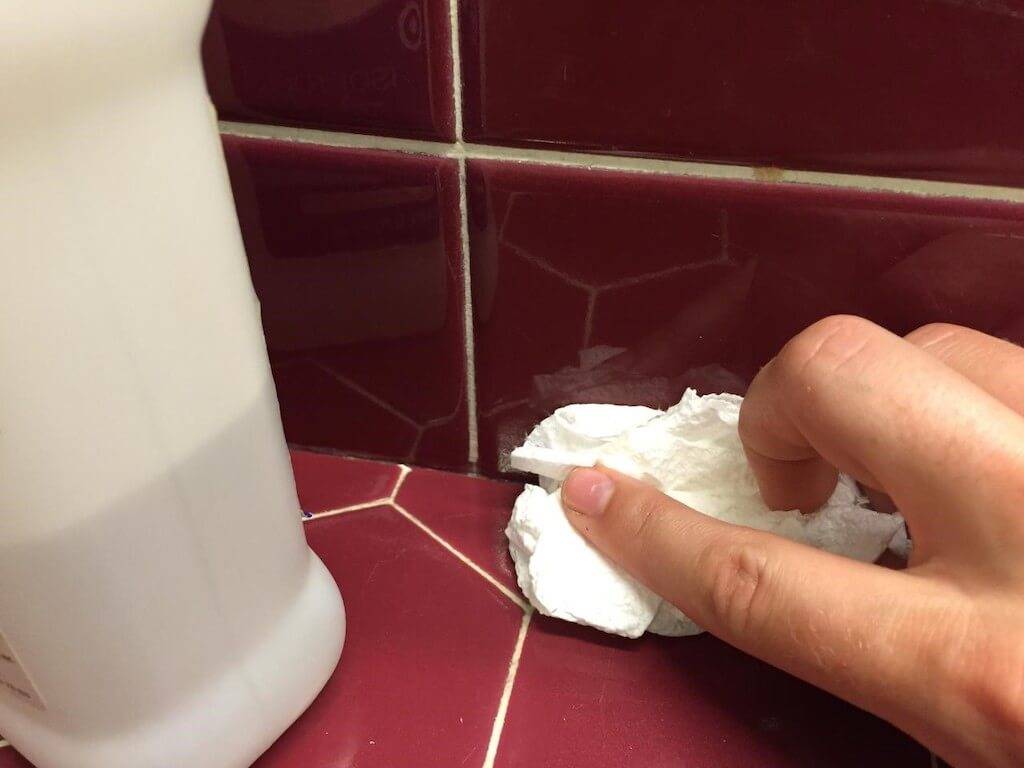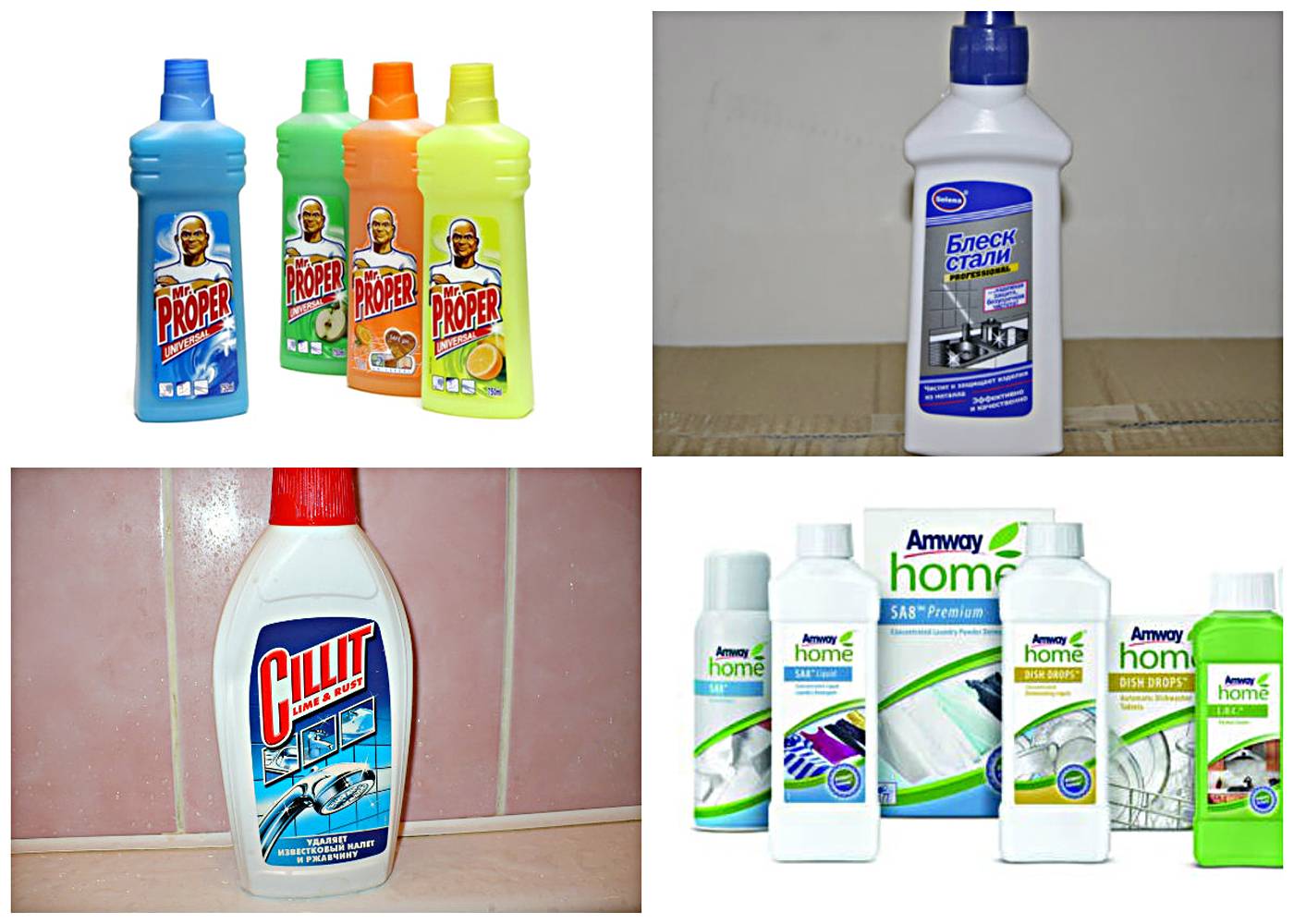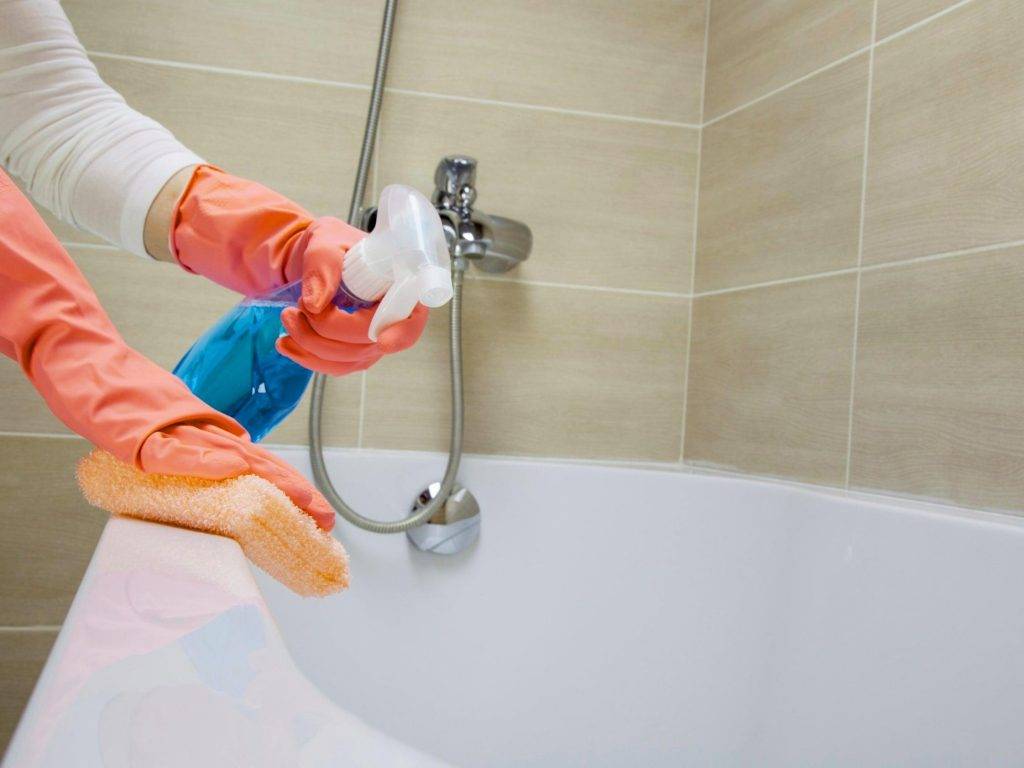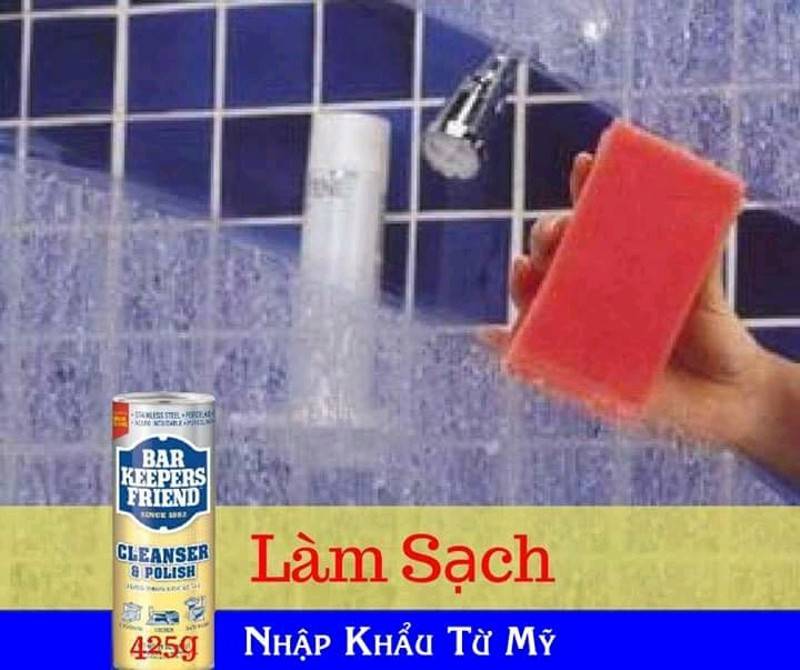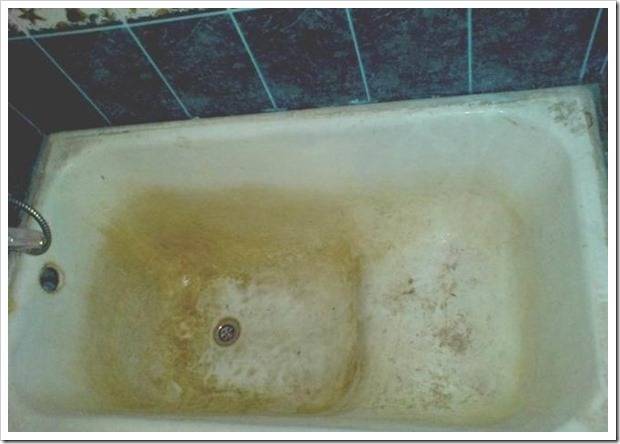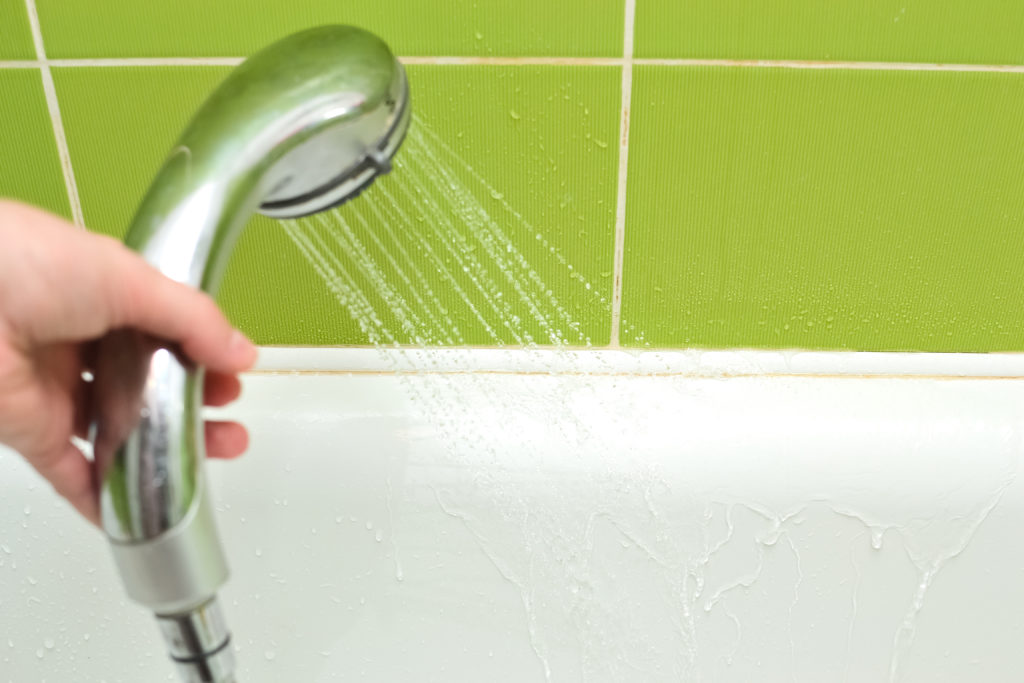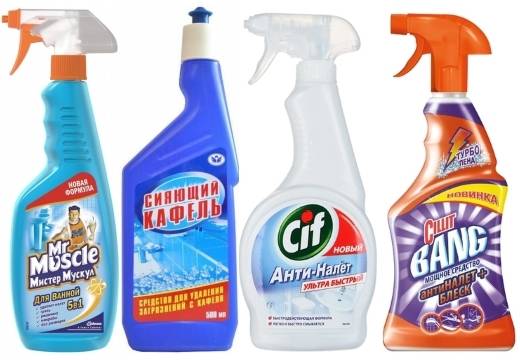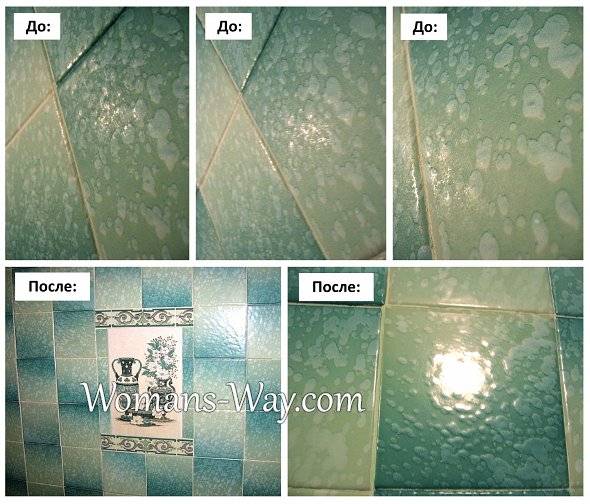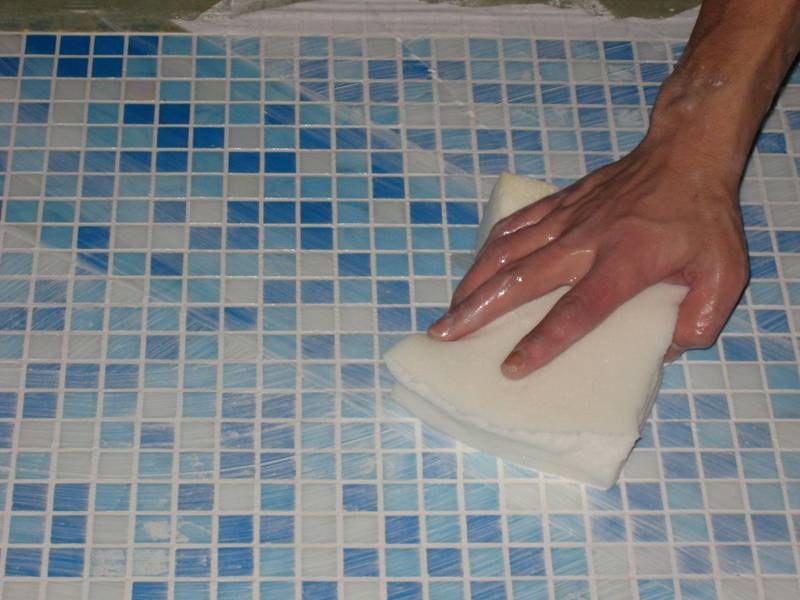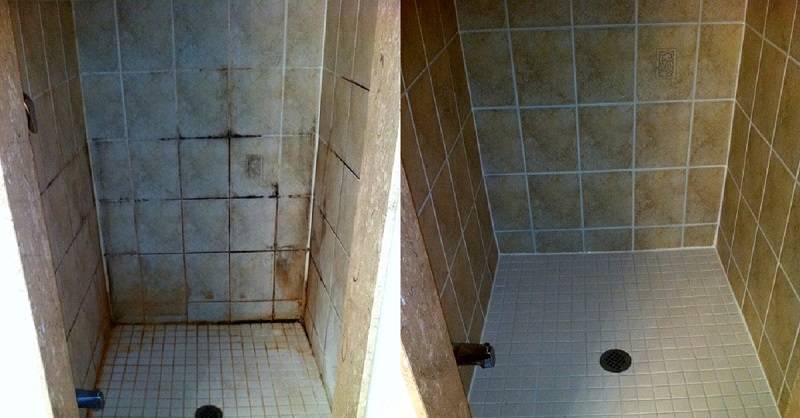Cleaning tiles using folk methods
If the store-bought detergents did not cope with the task at hand, the plaque remained on the tile, you can use improvised means. Cleaning with folk effective recipes is a budget and effective solution to the problem of accumulation of dirt in the bathroom. It will be possible to eliminate education without harm to health.
Acids and alcohols
Citric acid powder dissolves formations on ceramic tiles. Apply a small amount of crystals with a damp sponge or cloth, spread over the walls of the bathroom. Rinse with water, wipe with a cloth. The method helps to quickly clean the surface without physical effort.
If a dry product is not available, fresh fruit can be used. Rub the plaque with a lemon wedge. This will facilitate the laundering process. Rinse the area to be treated with clean water.
A good effect in removing tarnishing on tiles is achieved from the use of ammonia. The ammonia solution is diluted: 1 tbsp. l. substances per 2 liters of water.
Application method:
- Moisten a sponge with the finished mixture, process the tile.
- They begin to wash off the darkening from the plaque after 15 minutes.
- Rinse well with clean water.
- Wipe dry.
- Open windows, bathroom doors for ventilation.
To give the tiles a shine, it is recommended to rub them with a flannel cloth. Liquid ammonia kills mold spores.
Chlorine
The disinfectant detergent quickly removes dirt and deposits.
Algorithm of actions for washing tiles in the bathroom:
- Dissolve a small amount of bleach with water.
- Fill the spray bottle with the composition.
- Spray on tiles.
- Leave to wash for 5 minutes.
- Rub with a sponge.
- Rinse until the surface stops foaming.
Vinegar
You can wash the tiles in the bathroom from plaque with table vinegar. The features of using the product depend on its concentration. 9% of the substance is used without dilution. The essence is diluted: for 1 liter of water, take 3 tbsp. l. acid. Instructions:
- Spray the product on the tile with a spray bottle.
- Wait 5 minutes for the substance to penetrate into the structure of the plaque, the washing begins from the inside.
- Rub the ceramic surface with a soft brush.
- Remove residues with a dry cloth. Do not use the shower, bath for a while, letting the treated areas dry out.
Perform the manipulation while protecting your hands with gloves. The acid damages the skin, causing burns.
Other
The material from which the tiles are made does not always lend themselves to washing by standard methods. The surface of the elements can be damaged by the corrosive effects of acids. You can remove limescale from the tiles in the bathroom with gentle compounds.
Dentifrice:
- Dilute with a little water to form a paste.
- Distribute the cleaning agent.
- Leave to dry.
- Gently wipe off plaque with a damp sponge.
- Dry with a rag.
The powder makes the seams in the bathroom between the tiles white, removes stains.
Washing procedure with baking soda:
- Moisten the sponge, soak it with powder.
- Attach to the problem area.
- Rub the plaque gently. Clean without pressure, so as not to leave scratches and micro-damage that will spoil the look of the bathroom.
- Rinse the tiles with clean cold water.
Washing method with soapy water:
- Fill the container with a small amount of liquid, add soap.
- Wipe the area where plaque has formed in the bathroom, moving from bottom to top.
- Remove moisture quickly, wipe with a dry cloth.
This helps to prevent the development of fungus, the appearance of unpleasant formations.
Wipe the walls dry after bathing
In any case, in order to achieve perfect cleanliness, you will have to thoroughly clean everything with your own hands. A person does not always have enough time to clean the bathroom every week so that there are no streaks. For such people, there are special products that can be applied to the tiles, and then they will repel dirt and keep the surface clean longer.
There are also tricks in a series of folk remedies:
- 1How to clean the walls in the bathroom for a long time? This effect can be achieved by treating them with vinegar from a spray bottle, evenly distributing them over the surface. Leave the vinegar on the walls for literally 5 minutes and rinse off with plenty of water. The result will be amazing. If, after this method, you wipe the walls in the bathroom after bathing with a dry cloth, then the effect can persist for a long time. In addition to the visual result, this product perfectly protects against the formation of mold and mildew.
- 2If the walls are clean, but there are soap stains or traces of water on them, you can quickly put them in order by moistening a cloth with alcohol and wiping the tiles with it. In this case, it is imperative to ensure that the door to the room is open and the room is ventilated.
- 3Do not be surprised, but it turns out that you can clean the tiles in the bathroom with polishes intended for furniture or for car interiors. By the way, the latter option remarkably repels water and prolongs the glossy effect.
- 4 Another option for a secret remedy for stains is a solution of water and tooth powder. It is applied to the walls from a spray bottle, and when it dries up, it is not washed off, but polished with a soft cloth.
Of course, chemical agents have many positive properties, including the following: quick result, long-lasting effect, the agent can be used immediately, without prior preparation. However, such funds can seriously harm the body: cause irritation, allergies. They leave behind a specific smell in the apartment, despite the fragrances. More natural remedies, although they require more effort to achieve a suitable result, protect your home from harmful fumes. Of course, vinegar and alcohol also smell unpleasant, but the smell from them can be quickly eliminated. If you use such simple methods several times, you will probably forget about chemical analogues.
Please note that sometimes it is not so important than washing the tiles, it is more important to know how often it should be done. Only regular cleaning will prevent the development of fungus in the bathroom. Even if you clean it with high quality and using the arsenal of the necessary funds there is no time, you can at least wipe the tiles dry after water procedures
This will prolong the effect of the previous cleaning and will prevent the appearance of limescale. Only regular maintenance will prolong the life of your tile and make it shiny.
Even if you clean it efficiently and with the use of the arsenal of the necessary funds there is no time, you can at least wipe the tiles dry after water procedures. This will prolong the effect of the previous cleaning and will prevent the appearance of limescale. Only regular maintenance will prolong the life of your tile and make it shiny.
Chemicals for cleaning tiles in the bathroom
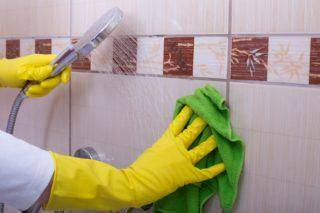 Thoroughly rinse the detergent off the tiles to prevent streaks.
Thoroughly rinse the detergent off the tiles to prevent streaks.
For cleaning ceramic tiles, products are produced in the form of powders, gels and sprays. Each tool has its own advantages and disadvantages. However, in all of them you will find disinfectants that fight microorganisms, and aromatic additives that give a pleasant smell in the bathroom after washing.
Features of each type:
- The powder effectively removes visible dirt. However, this is a coarse abrasive that can damage the delicate surface of the tile. Examples: Pemolux, Sarma, Comet, etc.
- The spray is evenly and conveniently applied to ceramic and acrylic tiles. Easy to rinse off.The chance of getting divorces is minimal. Suitable for regular bathroom maintenance. Among the most popular are Clorox, Sarma, Sama.
- The gel contains more aggressive substances and helps to clean local dirt. You only need to work with him with gloves. Sanelit, Comet, Santri are suitable for tiles.
Good household chemicals contain active ingredients that effectively act on pollution. With the help of universal tools, you can get rid of several problems at once, for example, from rust stains, mold, limescale in the room. However, these same components can negatively affect the tile material.
You need to be especially careful with the acrylic surface. It does not tolerate acid and strong solvent based formulations
If chalk is included in the product, white streaks appear after using it. Therefore, if the surface of the material is colored, it is better to avoid such a composition.
The most famous and effective tile cleaners:
Mr Muscle. A good formulation that is suitable for most non-porous surfaces. Apply it for 5 minutes to kill germs. The manufacturer offers a wide range of refreshing aromas.
Cillit Bang. A universal remedy for limescale, grease, mold, rust, plaque.
Domestos. Multifunctional cleaner. In addition, it removes germs and fungal spores. The exposure time to dirt is 10 minutes.
Comet. A good cleaning powder to help clean your tile floor
Use with care as this is a soft abrasive. Spray "Komet" cleans more gently
Easily removes grease and other impurities.
Cif. A drug that returns the surface to its original whiteness. The exposure time is 2-3 minutes.
Amway. A composition that will help clean up stains and grease from the floor.
Santik. This spray will help remove limescale deposits from tiles and bathrooms.
The effectiveness of the product depends on the degree of soiling and the type of ceramic tiles.
To clean the tiles in the bathroom from fungal stains, use special disinfectants. The following household chemicals are best known:
- Stop mold. The product does not contain chlorine components and is safe for human health.
- Antifungal It removes well any organic impurities. Diluted with water 1: 2.
- SikaGard. Cleaning liquid for washing, which does not emit aggressive and harmful vapors during use.
- Neomid Bio. An effective spray with a set of anti-fungal biocins.
- Dali. A good all-round remedy. Cleans stains of different nature. Available as a spray.
The anti-fungus treatment must be carried out several times to completely remove the spores.
Removing mold
Next, consider how to eliminate mold and mildew with folk remedies. If the formation is obvious and large, then it is worth removing it with a sharp instrument. A construction knife is perfect in this case. For small molds, you need hydrogen peroxide, vinegar, baking soda, a 1.5 liter container, and a spray bottle. You do not need to mix the ingredients.
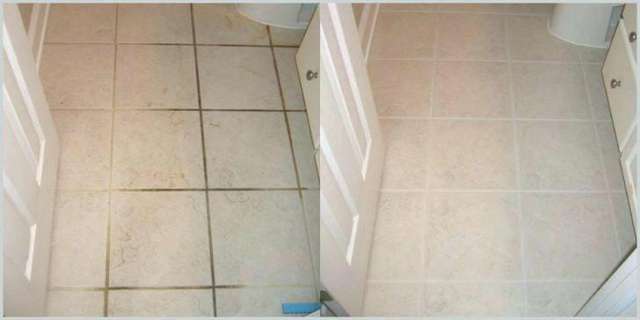
First you need to treat the surface with hydrogen peroxide from a spray bottle
Particular attention should be paid to tile joints, where mold is especially active. Leave the surface to dry, then wash off the composition with a sponge
After that, pour a solution with vinegar (4 tablespoons) into the container and also process the tile, not forgetting about the seams. Wait ten minutes and wipe the tile with a sponge and a little warm water. Leave the tiles to dry for five minutes.
We dilute baking soda in a container (7 tablespoons) and process the surface. At the same time, we clean the seams with the hard side of a sponge or an old toothbrush. It is worth warning right away that it is impossible to wipe the mold from the tile itself with metal brushes or some kind of abrasive tools. Scratches or even chips may appear on the tiles.
Cleaning methods
Of course, most housewives use special detergents to clean the cladding in the bathroom, which can be purchased at any store. Below we will consider the most common of them, we will tell you for which types of pollution they are more effective, and what reviews have certain means:
- Mr Muscle ("Bathroom Expert"). The manufacturer indicates that the product cleans dirt, disinfects, adds shine, does not leave streaks. Cost from 250 rubles. It is applied to the surface with a spray gun. According to customer reviews, the product cleans well ceramic tiles and seams, as well as plumbing. After using it, there really are no streaks, the surface becomes clean and shiny. But it does not cope with too old pollution. Suitable only for daily cleanliness. Among the minuses, an unpleasant acrid citrus aroma is noted.
- Cilit Bang ("Antilet + shine"). The manufacturer notes that this product fights limescale, rust, soap stains and stubborn dirt. Cost from 250 rubles. The bottle has a spray bottle for easy application. Customers mark this tool as one of the best. With its help, you can easily remove difficult dirt not only from the tiles on the wall, but also on the floor. To do this, it is enough to leave the product for 5-10 minutes on a dirty surface, then rinse with plenty of water. With Cilit Bang, even embossed tiles can be easily cleaned without any extra effort. Among the disadvantages of the hostess, an unpleasant pungent smell is noted.
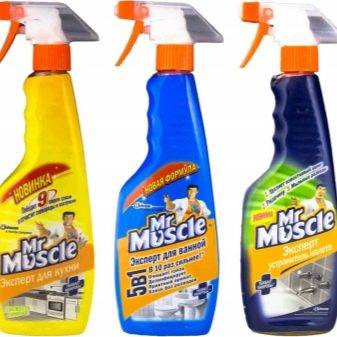
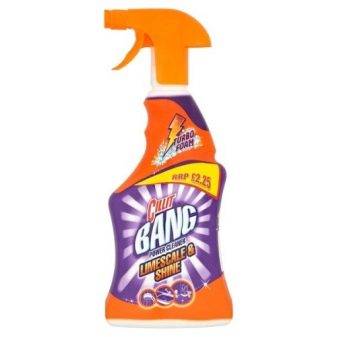
- Domestos ("Double Strength"). The manufacturer assures that the product kills germs and cleans the surface as much as possible. Cost from 180 rubles. Most customers note that with the help of Domestos, you can clean not only the bathroom, but also the toilet. Thanks to this tool, it is much easier to wash tiles from mold and plaque at home than with other means. Of the minuses, it is noted that the liquid has an unpleasant smell of bleach and with it you cannot wipe off rust.
- Cif ("Anti-Plaque"). The manufacturer indicates that the product removes limescale, stubborn dirt, soap stains. Cost from 180 rubles. Most customers note that with the help of Cif, you can clean the surface of the tiles matte from plaque, and in a matter of minutes the cladding will regain its original shine. In addition, the product copes well with stubborn dirt and rust. And also the embossed tile is cleaned without much effort. Among the disadvantages of the hostess, a persistent smell of bleach is noted.
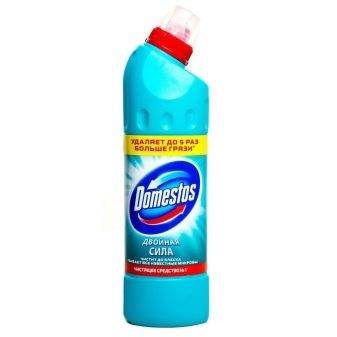
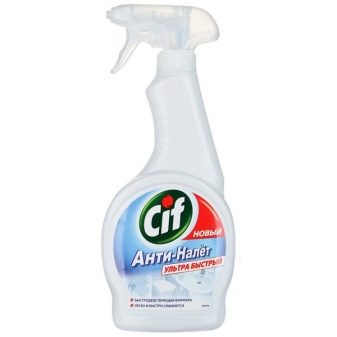
- Comet ("7 days of cleanliness"). The manufacturer writes that the product removes limescale and rust, disinfects and keeps it clean for up to seven days thanks to a protective layer. Cost from 200 rubles. Customers mark this tool as one of the best for cleaning the bathroom, as it does an excellent job of its functions. In order to remove old stains and the tile shone like new, it is necessary to leave the liquid on the surface for a deeper effect for 10-15 minutes. The hostesses separately point out that not a trace of rust remains in a matter of minutes. The smell of the product is chemical, but not pungent, like many similar products.
- Unicum ("For cleaning the bathroom"). The manufacturer writes that the product gives shine and cleanliness to the bathroom and toilet room, instantly removes soap and limescale, rust, mold, mildew, leaves a protective nanolayer that prevents further contamination. Cost from 200 rubles. Housewives note that this liquid has a pungent odor and cannot cope with old stains and mold. But it perfectly removes plaque, rust, polishes the surface.
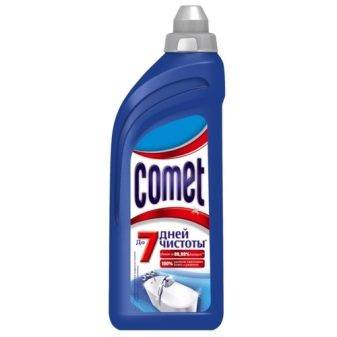
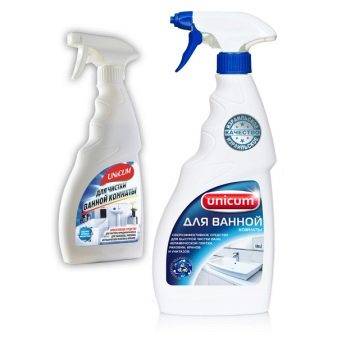
- To remove mold, customers use a special product from this manufacturer - Unicun ("To remove mold in the bathroom").This liquid removes mold and mildew from any surface in seconds for a long time. The cost of such a product is from 180 rubles. Buyers point out that this is one of the most effective means to combat this problem. The smell is chemical, but not pungent. There are no downsides to this remedy.
- "San wedge" ("Santik") is a liquid for cleaning tiles, faience and sanitary ware. The manufacturer promises to remove limescale, rust and other contaminants. Cost from 180 rubles. The hostesses noted that the product copes with the main tasks, but old stains are beyond its power. Among the minuses, they indicate an unpleasant odor and the appearance of chemical burns on the skin, if you do not use gloves.
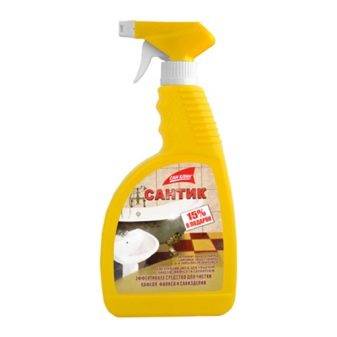
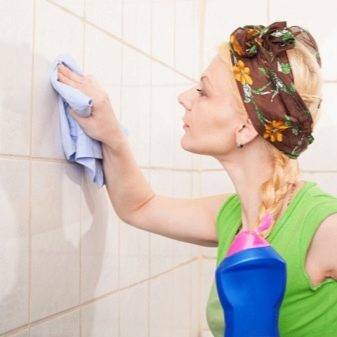
Peculiarities
Tile or ceramic tile is a durable and very hardy material, which is why it is very often used for decoration in the bathroom. With proper care, this facing material will last for more than a dozen years and retain its original gloss and shine. In addition, among the advantages of such a tile, you can also note:
- a huge selection of colors and shapes, which allows you to implement any design in the bathroom;
- excellent wear resistance to temperature extremes, steam, grease, chemical and cosmetic substances;
- simplicity and ease of use and cleaning.
In order not to start contamination, the tiles must be cleaned regularly. Most housewives know that, first of all, limescale appears on the surface of the tile, the cause of which is a too humid room and hard water. In addition, rust and mold cannot be avoided. Few think about it, but our usual shampoos, shower gels and toilet soaps also leave marks on the tiles.
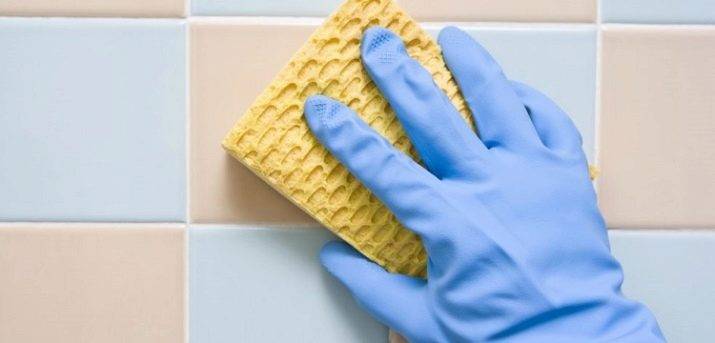
With neglected dirt, it will be much more difficult to wash the tiles. And this will require additional efforts, primarily in the form of financial investments, and also several times more energy and time will have to be spent on cleaning. Therefore, preventive measures are much more effective and less costly.
Use of improvised means
Many people ask the question: "how to wash the tiles in the bathroom with folk remedies for plaque?" It is quite possible. Consider the most effective available tools.
Laundry soap
The tool does an excellent job with yellow bloom on tiles and whitens them perfectly. To do this, you just need to rub a brush, sponge or rag soaked in water with laundry soap, treat the surface and leave to act for half an hour. Then the product must be thoroughly rinsed with water and the surfaces wiped dry.
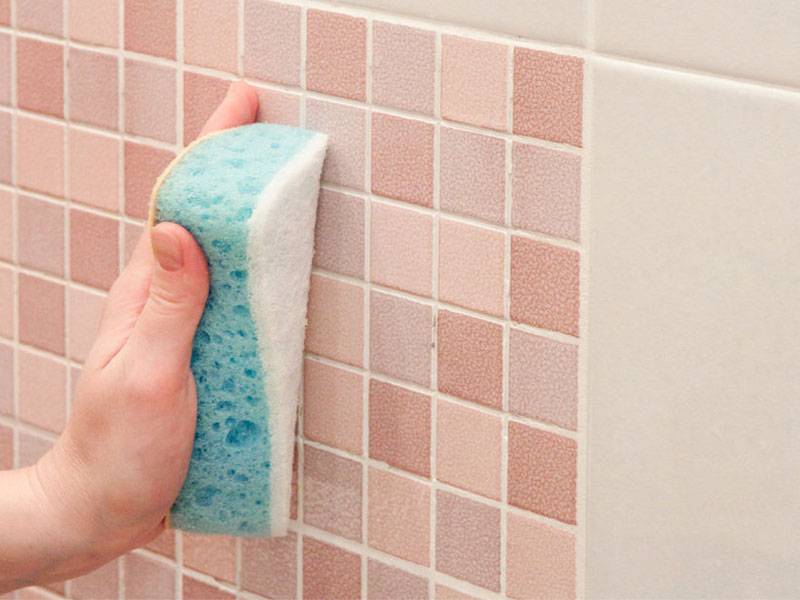
For white tiles, it is best to use a bleaching laundry soap. It is better not to use such a tool on colored tiles.
Vinegar
Vinegar works well for cleaning limescale tiles. Using a spray bottle, it is sprayed onto the surface and left to act for several minutes, then washed off with water.
Remember: vinegar cannot remove stubborn plaque. But together with salt, it copes well with rust. To do this, soak the brush in vinegar, sprinkle it with salt and gently walk over the surface of the tile. Salt with large crystals should not be used in this case.

Soda
Another way to help clean tiles from plaque with folk remedies is soda. With its help, you can easily cope with greasy deposits, mold, fresh rust, limescale and any other contamination.
To begin with, you need to wet the tiles, and soak a wet sponge in soda. Then you should walk along the surface of the tile. The baking soda should be left to act for half an hour, then walk over the tile with a flexible dish brush or the hard side of a sponge. After that, the surface is wiped with a cloth soaked in water several times so that no streaks remain.

For glossy tiles, use soda ash.It copes well with dirt and does not damage its surface, since it has practically no abrasive particles. Another advantage is the absence of streaks after using it.
Hydrogen peroxide
Another effective method that allows you to quickly and easily get rid of soapy, yellow, light limescale, any stains at home is hydrogen peroxide. You need to use a 3% product. The peroxide should be applied to the surface several times, only then it will be possible to wipe off the resulting stains.

Ammonia
Alcohol itself is not able to cope with pollution. It is added to tile cleaners to prevent streaks on the surface.
Lemon acid
Citric acid and lemon juice dissolve limescale and provide a light whitening effect. A sponge soaked in water is dipped in citric acid and the surface of the tile is wiped, then left to act for 2-3 minutes. Then wipe the surface with a clean cloth.
If you have a glossy tile, then it is better to dissolve citric acid in water. Remember: this product is not used to clean the joints from dirt, as citric acid can dissolve the grout.
Home chemistry
- Table vinegar. It is in every home, we usually use it in the kitchen. But it can be used quite well in the bathroom for cleaning joints and tiles - both from plaque and from pathogenic microbes. To clean the seams, you can use undiluted vinegar, and for the surface of the entire tile, it is better to dilute in a ratio of 1 to 10; the concentration can be increased if necessary. It is convenient to clean the seams with an old toothbrush, and on the rest of the surface you need to apply vinegar for 10-15 minutes, after which, wiping with a rag, rinse with water.
- Lemon acid. A remedy similar in quality to vinegar, only weaker. But it has such an important advantage as a pleasant smell of citrus after harvesting.
- Chlorine, "Whiteness". Known for its disinfecting properties for a long time, it can wash away dirt and plaque, even remove mold stains. It is worth knowing that the seams are bleached if they are colored, or the shade of white becomes lighter. Therefore, before use, try to clean a piece of the seam with undiluted whiteness to check. To clean the lining in the bathroom, you need to apply bleach and leave for 10 minutes, then rinse.
- Ammonia. It is used only in diluted form, as it has a too pungent odor. Diluted 1-2 tablespoons in 2-3 liters of water. Helps not only to clean the tiles, but also to return the gloss to its former shine! For this, it is better to use a more concentrated solution of ammonia.
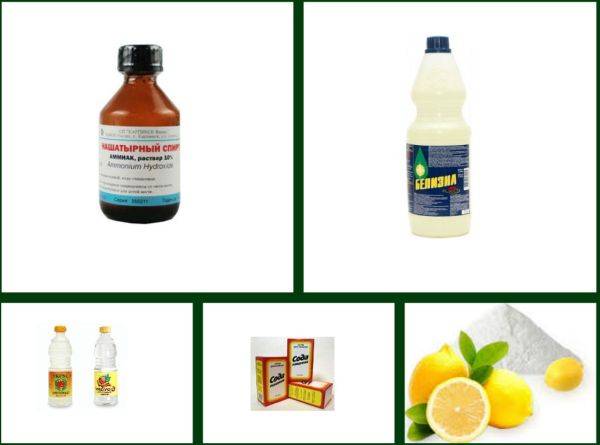
You can use the most common home remedies for cleaning.
- Soda. Also a proven cleaning agent, sometimes it does better than many specialized products. It can be cleaned both plaque and not very rooted fungus. For use, it is best to dilute it with water until it becomes sour cream. You can use it with the addition of hydrogen peroxide to give antiseptic properties to soda - then microbes, along with fungus and mold, will be destroyed. One has only to know that rubbing soda with special zeal is not worth it, especially into glossy tiles, since soda contains small abrasives. After using baking soda, thoroughly wash and wipe the treated surface.
- Bura. It is used to remove mold and mildew. Does not cause allergies. Dilute 1 in 10 with water and brush. No need to wash after use.
- Copper sulfate. The fungus can be cleaned with vitriol, but it is toxic and should be used in well-ventilated areas. Dilute 1 in 10 and apply to the affected areas with a brush for several hours. Then it is thoroughly washed and dried.
How to properly wash tiles
If you do not wash the tiles for a long time, limescale forms on it, the surface dulls, and black mold starts up in the seams. So that the tile does not fade and does not lose its visual appeal, it is necessary to take care of the coating regularly. It is optimal to wash the coating in the bathroom once a week.
Cleaning of wall tiles should be started by washing with warm soapy water. Wet cleaning is carried out from top to bottom, dry cleaning - on the contrary, starting from the bottom of the wall.
If it is heavily soiled, you can use a special cleaning agent or use alcohol or vinegar. To do this, soak a soft sponge in a solution of ammonia (1 tablespoon of alcohol per 2 liters of water) and wipe the surface. So you will not only wash away the dirt, but also return the shine to the tile. You can use a vinegar solution. To prepare it, mix 200 ml of vinegar and 1 liter of water. If mold has formed in the joints between the tiles, treat them with an alcohol solution (1/2 glass of alcohol per 4 liters of water).
You should know that if the seams between the tiles in the bathroom are not treated with epoxy sealant, then you cannot use vinegar and alcohol for cleaning. These aggressive products can compromise the integrity of the seams.
After cleaning the tiles, degrease the joints with ammonia and apply an anti-fungal agent. This is conveniently done with a long-bristled toothbrush. If there is high humidity in the bathroom and the risk of mold growth is high enough, treat the tiles themselves with an anti-fungal agent. To do this, dilute it in water and apply to the surface of the tile.
To clean a tile floor, first use a vacuum cleaner and remove any small debris. Then wash it off with a soft woolen cloth and soapy water. Having a good steam cleaner will make it much easier to maintain your tiles. Such a device perfectly cleans and disinfects the tiled surface. After cleaning the floor, wipe it dry and rub to a shine.

